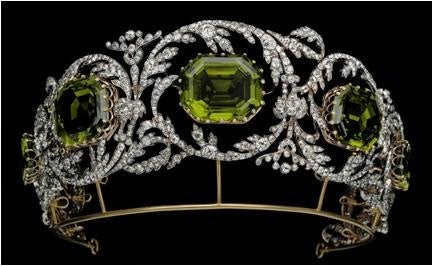|
Unwilling to wait for Mother Nature to bestow the glittering gift of peridots at her leisure, ancient Egyptians began mining the gorgeous green gemstones from the island of Zabargad as early as 1500 BCE. From almost that first moment of human intervention in bringing them into the light, peridots were woven into Egyptian society. With a color reminiscent of verdant foliage, peridot became associated with Isis—goddess of spring, motherhood, magic, and wisdom—and it is said her priests crushed peridots and drank them as a way to draw closer to the nature of Isis. In fact, peridot has been of such importance throughout Egyptian history that it remains the national gemstone of the country.
But it has never been just the Egyptians and Hawaiians who are riveted by the stunning shades of green which gleam from the heart of the peridot—one of the oldest known gemstones in human history. Romans referred to peridots as emeralds of the evening because of the way they continued to sparkle as brilliantly by firelight as by the shine of the sun and used them as talismans to ward off evil intentions from others. And in more recent history, Napoleon is said to have wooed Josephine with peridot jewelry, while Edward VII was famous for his fascination with the gem. His declaration of peridot as his favorite gemstone caused its popularity to soar throughout the Victorian, Edwardian, and Art Nouveau eras.
|


